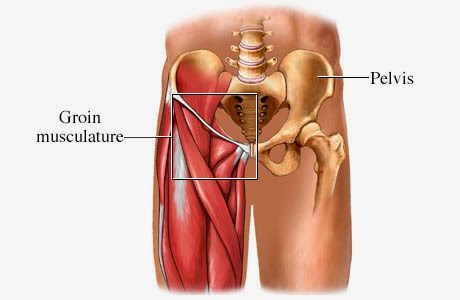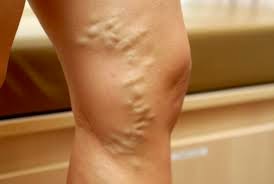PATELLOFEMORAL SYNDROME
PATELLOFEMORAL SYNDROME
The patellofemoral syndrome is a group of conditions in which the hallmark is pain beneath or surrounding the patella (kneecap). The patella is a unique bone in the leg because it does not directly bear weight. Weight is borne from the femur (thigh bone) through the tibia and fibula, which continue down to the ankle where they form the “dome” of the ankle joint.
The patella sits in front of the knee joint and is held, as it were, on a bowstring; the patellar tendon attaches it to the front and is held, as it were, on a bowstring; the patellar tendon attaches it to the front of the tibia below and the quadriceps complex, four powerful thigh muscles, attach it to the hip and femur above.
As the knee flexes and extends (bends and straightens), the patella tracks along a groove in the front of the femur. Any factor which disrupts this normal “tracking mechanism” can result in inflammation or pain to the undersurface of the patella. When mild, the undersurface may simply be inflamed. When more severe, the cartilage may actually become damaged or arthritis may develop. When the tracking is poorly controlled or poorly aligned, instability of the patella may result, with subluxation or actual dislocation. Most commonly in athletes, there has been too rapid an increase in training duration, intensity or other sudden changes.
Initially the patient should strengthen his quadriceps isometrically, progressing to isotonic strengthening. Sometimes isokinetic exercise is necessary as well. (Details follow below.) In some patients, electrical stimulation or biofeedback may supplement and enhance the exercise program. Electrical stimulation involves application of electrodes to the thigh and an electrical current, which assures that the contraction of the muscle will be full and result in strengthening. Biofeedback involves application of electrodes with a sound (auditory) or light (visual) signal which indicates to the patient how complete the contraction is.
The patient can then monitor and adjust their effort to gain fuller control over the muscle contraction. These complex techniques are reserved for more difficult cases. One should always avoid exercising through a painful “arc” of the range of motion. This is usually in the part of the arc where the patello-femoral pressure is highest, through mid-flexion.
These medications reduce the inflammatory process by inhibiting prostaglandin synthesis. Prostaglandins are responsible for much of the pain, swelling, and destruction of cartilage. These medications are often quite effective. However, there is a risk of heartburn, gastritis, fluid retention, and other less common side effects. Therefore, these should not be taken without advice of a physician.
In addition, there is a role for shoe orthotics (inserts). This is primarily useful in people with malalignment. For example, if the patient has flat feet with a consequent increased “Q” angle, orthotics with arch support can reduce the Q angle and, therefore, result in decreased symptoms. Sometimes, taping techniques can be used to reduce symptoms related to patellar tracking.
http://www.rehabmed.net/pe_patellofemoral.html
The patellofemoral syndrome is a group of conditions in which the hallmark is pain beneath or surrounding the patella (kneecap). The patella is a unique bone in the leg because it does not directly bear weight. Weight is borne from the femur (thigh bone) through the tibia and fibula, which continue down to the ankle where they form the “dome” of the ankle joint.
As the knee flexes and extends (bends and straightens), the patella tracks along a groove in the front of the femur. Any factor which disrupts this normal “tracking mechanism” can result in inflammation or pain to the undersurface of the patella. When mild, the undersurface may simply be inflamed. When more severe, the cartilage may actually become damaged or arthritis may develop. When the tracking is poorly controlled or poorly aligned, instability of the patella may result, with subluxation or actual dislocation. Most commonly in athletes, there has been too rapid an increase in training duration, intensity or other sudden changes.
- Who is at the risk of PFS
- What are thw symptoms of PFS
- How is the PFS treated
- Whar are the spesific of the exercises program
Initially the patient should strengthen his quadriceps isometrically, progressing to isotonic strengthening. Sometimes isokinetic exercise is necessary as well. (Details follow below.) In some patients, electrical stimulation or biofeedback may supplement and enhance the exercise program. Electrical stimulation involves application of electrodes to the thigh and an electrical current, which assures that the contraction of the muscle will be full and result in strengthening. Biofeedback involves application of electrodes with a sound (auditory) or light (visual) signal which indicates to the patient how complete the contraction is.
The patient can then monitor and adjust their effort to gain fuller control over the muscle contraction. These complex techniques are reserved for more difficult cases. One should always avoid exercising through a painful “arc” of the range of motion. This is usually in the part of the arc where the patello-femoral pressure is highest, through mid-flexion.
- Isometric Strengthening
- Straight Leg Raise (Isometric)
- Isotonic Strengthening
- Terminal Extension Sitting up on a table or a high chair, with feet dangling, weight around ankle, straighten (extend) the knee to full extension. The knee should then be bent up to 30 degrees of flexion slowly and straightened again. Each flexion-extension arc is one repetition. Perform 15 repetitions, 3 sets. This exercise should be begun with approximately 5-10 lbs. And gradually increased to 20 lbs. over several days to weeks.
- Multiple Small Arc Isometrics/Isotonics If feasible, multiple similar contractions should be performed at different angles of flexion. These should be begun isometrically and progressed to small arcs of isotonic flexion/extension.
- Once #1 and #2 can be done comfortably Vradually increase to full-range isotonic strengthening. This means sitting with leg extended, and flexing all the way and extending all the way. This is not for everyone!
- Isokinetic Strengthening
- what medication are useful in the patellofemoral syndrome
These medications reduce the inflammatory process by inhibiting prostaglandin synthesis. Prostaglandins are responsible for much of the pain, swelling, and destruction of cartilage. These medications are often quite effective. However, there is a risk of heartburn, gastritis, fluid retention, and other less common side effects. Therefore, these should not be taken without advice of a physician.
- what role does physical therapy play
- what role do orthotics play
In addition, there is a role for shoe orthotics (inserts). This is primarily useful in people with malalignment. For example, if the patient has flat feet with a consequent increased “Q” angle, orthotics with arch support can reduce the Q angle and, therefore, result in decreased symptoms. Sometimes, taping techniques can be used to reduce symptoms related to patellar tracking.
- what is the prognosis in the patellofemoral syndrome
http://www.rehabmed.net/pe_patellofemoral.html




I read your posts totally, I got and learn many new things from your blog which i was searching from many days.Thank you so much for providing us these nice articles.
ReplyDeleteOrange County Post rehabilitation
Physiotherapy is the best way to recover from patellofemoral-syndrome, so if you have such kind of problem consult your physiotherapist.
ReplyDeletephysiotherapy singapore